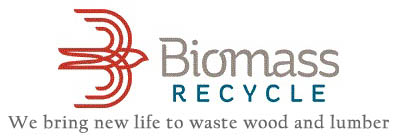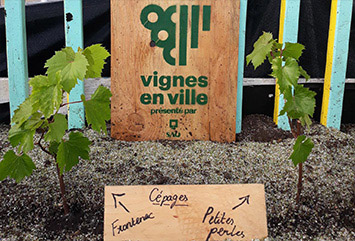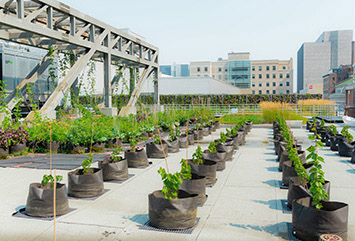|
|

|
  
Feature
Update 2019/12/4
Recycling
This story is brought to you in part by

VIGNES EN VILLE: TURNING WASTE INTO WINE
By Gillian Ward
The Société des alcools du Québec (SAQ) is the Crown corporation mandated to trade in alcoholic beverages in Québec. SAQ has been a leader in environmental stewardship, instituting curbside glass recycling in the 80’s to ensure that SAQ glass bottles would not wind up in the landfill.
In spite of monumental efforts to carry out the curbside glass recycling program throughout Quebec, there are always bottles unsuitable for standard recycling. Cross contamination in the blue bin, the age and condition of the glass condemns a consistent percentage of the collection to the trash, a condition that SAQ was not willing to accept without a thorough search for an alternative use for the waste glass.
Enter Véronique Lemieux, Montreal horticultural researcher with an open agenda for reusing and repurposing.
Lemieux is the founder of Vignes en Ville, a perennial planting project settling into its third overwintering of wine grapevines on the heights of the cityscape. SAQ has invested in this novel research project with Laboratoire sur l’agriculture urbaine de Montréal (AU/LAB).
 
“Well basically, it all started when I was working for the lab, in various Urban Agriculture Projects, then I went to Brooklyn to visit some funky projects with my family, and I ended up falling upon a rooftop commercial vineyard, where vines were planted into pots”, explains Lemieux.
When the idea of wine grape production was initially pitched to Au Lab, it presented a shift from the focus on nutritional plantings, projects intended to nourish people. As Lemieux describes it, “We used to plant only annuals, tomatoes, things that die over the winter and then have to be replaced, and I thought maybe we could try things that would actually stay alive and we wouldn’t have to plant again and again. That would be interesting...we could find an angle to this project, I heard that the vine needs lots of sand actually in the soil, so I thought we could maybe replace the sand by crushed glass and that would be the highlight and the purpose of the research.”
SAQ was immediately interested in this project, where sand in the potting mixture would be replaced by crushed waste glass. Two growing seasons in, the vines with glass in the mix are growing just as well as those with sand. As sand is a non-renewable resource, taking pressure off the limited supply of sand while also recycling waste glass has this project’s proponents feeling optimistic. Lemieux calculates that 13,000 glass bottles have been diverted from landfill for just 300 vines.
“This process actually takes four years to give good quality grapes, but at least it brought the concept of circular economy into the lab, it was unique, it was the first time that we were doing that kind of thing at the lab, all of a sudden everyone was enthusiastic, they said, “wow that’s amazing! Let’s do it, it makes sense.”
The project was launched in 2018 with the full backing of Au Lab. “The project will make it possible to:
assess the social benefits and the reduction of environmental impacts of this new greening practice;
make vine-growing knowledge accessible to city dwellers;
discover some of the grape varieties planted in Quebec; and study the benefits of adding ground glass to the growing medium or using it as a mulch.”
Much like the bee hives of Alvéole, covered in WaterToday feature “Rooftops Abuzz”, the grapevines remain on the rooftop year round, wrapped up for the winter and kept from the deep freeze by trapped heat radiating from the building.
Lemieux approached the city of Montréal and her research partners at Au Lab and SAQ with a determination to incorporate more waste materials to a new useful life, including some mystery materials previously unknown to her.
When SAQ engaged with this open-ended approach, waste problems began to be solved that otherwise would have been missed.
Lemieux relates, “As I was managing and designing the winter protection for the vines, I expressed to the SAQ that I didn’t find the material that would isolate the vines in a very clever and durable way, and they said ‘Oh, hold on, we are actually changing all the isolation membranes from our containers that travel across the ocean with the bottles of wine that we receive here in Québec, these membranes need to be changed.’ The half-aluminum, half-plastic material was described to Lemieux as bubble paper with two foils of aluminum, very hard to recycle. No problem for Lemieux, however. “Send it to me, I will use it.”
Small holes and tears were repaired, and the layers of aluminum and plastic cushion wrap were fashioned into a winter blanket for the grapevines. The winter shelter has been effective over two seasons, and into the third, with temperature monitored under cover remaining above minus 10 degrees centigrade even when the outside temperature on the rooftop drops to the extremes.
Alvéole has also made use of the waste thermofoil from SAQ to bundle beehives, joining in the quest to reuse rather than purchase new materials.
Recently, a new discovery has tilted the focus of research once again. In the four-year term to wine in the glass, Vignes en Ville has discovered that by adding a source of fungi (mycorrhizae) to the vine containers, the crushed glass completely decomposes back to its components of silica and carbon, leaving no trace of glass. The implications of this discovery could mean that tons of waste glass can be efficiently decomposed and returned to the environment, recycling valuable nutrients for food production, the upscaled circular economy of glass.
Lemieux will spend the winter season lining up her new research inquiry through the grapevine project, to determine how quickly and efficiently the mycorrhizae decomposes crushed glass in the potting mix.
Implications for waste reduction, conservation of non-renewable sand resource and nutrient recovery for food production follow, WaterToday will be tracking this developing work.
gillian@watertoday.ca
|
|
|
Have a question? Give us a call 613-501-0175
All rights reserved 2025 - WATERTODAY - This material may not be reproduced in whole or in part and may not be distributed,
publicly performed, proxy cached or otherwise used, except with express permission.
|
| |